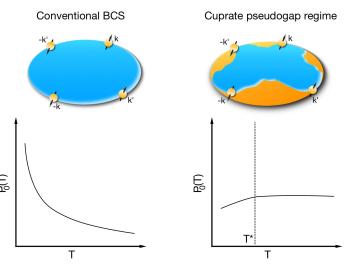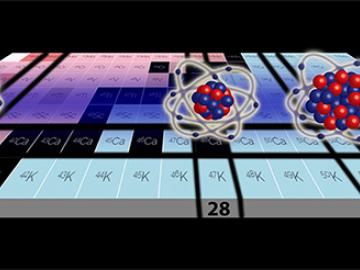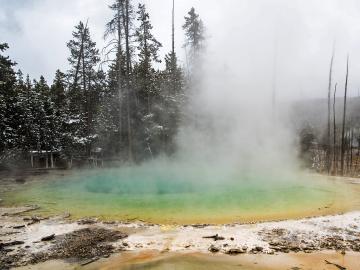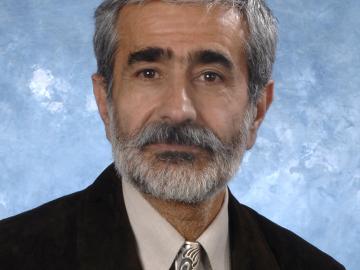
Filter News
Area of Research
- Advanced Manufacturing (34)
- Biological Systems (18)
- Biology and Environment (177)
- Biology and Soft Matter (5)
- Building Technologies (12)
- Chemical and Engineering Materials (4)
- Chemistry and Physics at Interfaces (11)
- Clean Energy (522)
- Climate and Environmental Systems (14)
- Computational Biology (6)
- Computational Chemistry (5)
- Computational Engineering (5)
- Computer Science (19)
- Data (1)
- Earth Sciences (1)
- Electricity and Smart Grid (3)
- Energy Frontier Research Centers (14)
- Energy Sciences (5)
- Fossil Energy (3)
- Fuel Cycle Science and Technology (3)
- Functional Materials for Energy (16)
- Fusion and Fission (54)
- Fusion Energy (19)
- Geographic Information Science and Technology (3)
- Isotope Development and Production (3)
- Isotopes (35)
- Materials (433)
- Materials Characterization (2)
- Materials for Computing (36)
- Materials Synthesis from Atoms to Systems (13)
- Materials Under Extremes (12)
- Mathematics (1)
- National Security (80)
- Neutron Data Analysis and Visualization (4)
- Neutron Science (190)
- Nuclear Science and Technology (74)
- Nuclear Systems Modeling, Simulation and Validation (3)
- Nuclear Systems Technology (1)
- Quantum Condensed Matter (4)
- Quantum information Science (9)
- Reactor Technology (1)
- Renewable Energy (4)
- Sensors and Controls (5)
- Supercomputing (312)
- Transportation Systems (11)
News Type
Date
News Topics
- 3-D Printing/Advanced Manufacturing (127)
- Advanced Reactors (34)
- Artificial Intelligence (100)
- Big Data (60)
- Bioenergy (92)
- Biology (101)
- Biomedical (60)
- Biotechnology (24)
- Buildings (64)
- Chemical Sciences (72)
- Clean Water (31)
- Climate Change (104)
- Composites (30)
- Computer Science (197)
- Coronavirus (46)
- Critical Materials (29)
- Cybersecurity (35)
- Decarbonization (84)
- Education (4)
- Element Discovery (1)
- Emergency (2)
- Energy Storage (112)
- Environment (199)
- Exascale Computing (42)
- Fossil Energy (6)
- Frontier (45)
- Fusion (58)
- Grid (66)
- High-Performance Computing (93)
- Hydropower (11)
- Irradiation (3)
- Isotopes (56)
- ITER (7)
- Machine Learning (50)
- Materials (147)
- Materials Science (146)
- Mathematics (9)
- Mercury (12)
- Microelectronics (4)
- Microscopy (51)
- Molten Salt (9)
- Nanotechnology (60)
- National Security (71)
- Net Zero (14)
- Neutron Science (135)
- Nuclear Energy (111)
- Partnerships (50)
- Physics (64)
- Polymers (33)
- Quantum Computing (37)
- Quantum Science (71)
- Renewable Energy (2)
- Security (25)
- Simulation (51)
- Software (1)
- Space Exploration (25)
- Statistics (3)
- Summit (59)
- Sustainable Energy (130)
- Transformational Challenge Reactor (7)
- Transportation (97)
Media Contacts
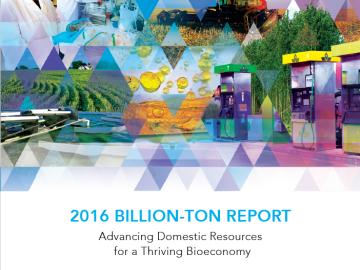
The 2016 Billion Ton Report, jointly released by the U.S. Department of Energy and Oak Ridge National Laboratory, concludes that the United States has the potential to sustainably produce at least 1 billion dry tons of nonfood biomass resources annually by 2040.
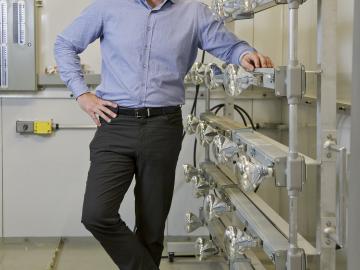
A scientist that sings opera and performs in musical theater? Sure. If you're a Renaissance Man like Simon Pallin. Pallin is a researcher in Oak Ridge National Laboratory’s Buildings Technologies Research & Integration Center. But his early interests and activities reveal a versatile person that could have chosen a number of occupations.
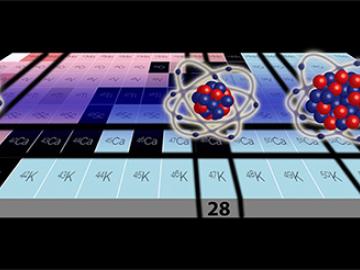
For decades nuclear physicists have tried to learn more about which elements, or their various isotopes, are “magic.” This is not to say that they display supernatural powers. Magic atomic nuclei are composed of “magic” numbers of protons and neutrons—collectively called nucleons—such as 2, 8, 20, and 28.
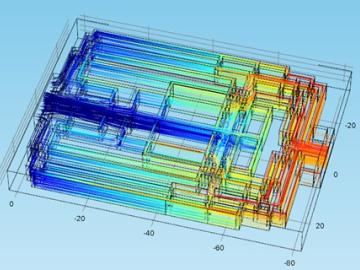
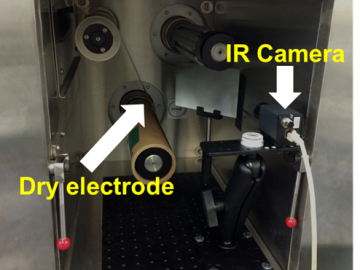
Production run spot checks of materials for lithium-ion batteries and fuel cells could be a thing of the past because of a process developed at Oak Ridge National Laboratory. The infrared/thermal nondestructive evaluation technique invented by a team led by David Wood examines key parameters such as porosity and thickness of the coating in real time without destroying product.
